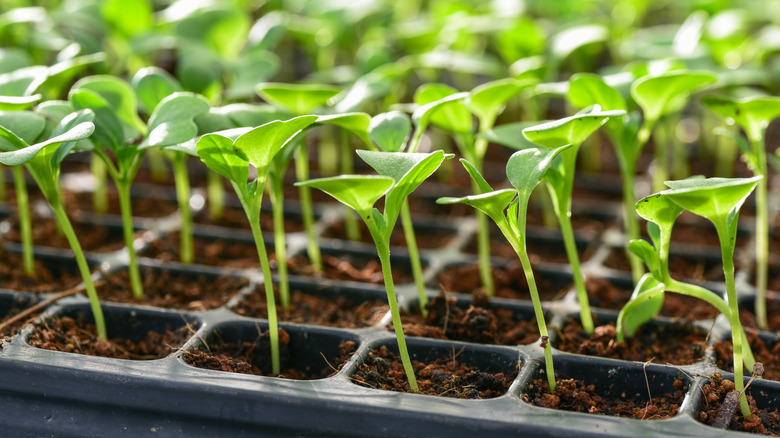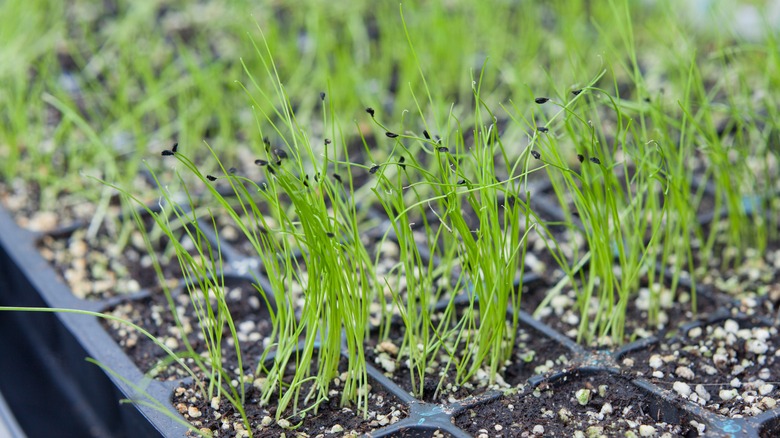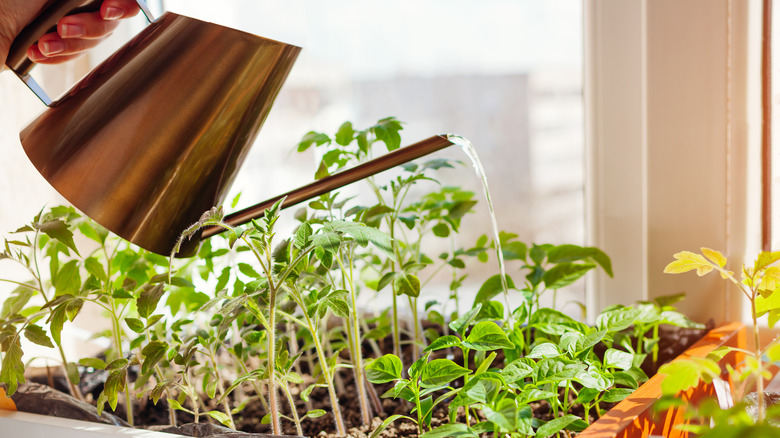How To Identify And Prevent Green Mold On Your Seedling Tray
Planting seeds in trays is a great way to get your garden off to a running start in the spring. If you have a sunny window or a greenhouse, starting some seeds indoors allows you to get them started while it's still cold outside. This is great for tender, cold-sensitive plants like tomatoes, peppers, or zinnias. This is a process that can occasionally have a few problems, one being the growth of green mold on the trays or on the surface of the soil. The reason this is a fairly common problem is that the conditions that allow green mold to grow are the conditions that are ideal for seed germination. So while this issue may be impossible to avoid completely, there are ways to lessen its occurrence.
The good news is green mold on your seedling trays is not a serious problem. But to give your seedlings the healthiest start possible, it's smart to keep their environment relatively clean. There are simple steps to follow to help prevent mold growth.
It's also possible that the green growth you see is not mold but a type of moss or algae. These growths are also caused by excessive moisture, and they're also not a serious problem. The prevention methods are the same as for preventing mold growth on your seedling trays.
What causes green mold on seedling trays?
This green mold is caused by the spread of fungal spores, and the moist soil required for seedling germination is the perfect environment for them. It is often the same bright green color as the tiny seedlings emerging from potting soil, so you may not notice it unless you look closely. You may also see the mold growing on the seedling containers, especially if you use cardboard egg cartons or peat pots, as these can retain moisture.
The fungal spores causing mold growth may arise from a number of causes. Using trays that haven't been cleaned thoroughly is one cause. Using potting soil that has already been used elsewhere is another possible cause that can worsen the spread of fungus. But the number one cause of fungal spore spread is excessive moisture and humidity on the soil surface. This can be caused by overwatering, which means the soil stays moist in between waterings instead of drying out before the next. Other contributing factors can be poor ventilation, poor air circulation, overcrowding, or too much heat.
Preventing mold growth on your seedlings
To prevent mold growth on your seedlings, do some preparation before you plant your seeds. Start with clean containers. If you are reusing old plastic containers, wash them in soapy water and rinse them in a dilute solution of vinegar and water to kill any remaining bacteria. Also, be sure to use fresh potting soil. You can still recycle or reuse your old potting soil elsewhere in the garden, but for tender seedlings, you definitely want fresh potting soil. Also: keep your bag of leftover potting soil clipped shut to prevent any bacteria from entering the bag.
When planting your seeds, follow the package directions to make sure you don't plant them too close together. This will help prevent overcrowding, which can create conditions conducive to mold growth. Be sure your seedling trays are in a location with good air circulation. Open a window for fresh air, even if only for a little while during the day. A fan can also help improve air circulation.
Watering your seedlings frequently is important for seed germination, but too much water can cause fungus to grow. So try using a mister to water seedlings until they sprout, then switch to a watering can if desired after seedlings have grown at least an inch high. Touch the surface of the soil before watering; if it feels moist, wait until it has dried out a bit to avoid too much moisture.


